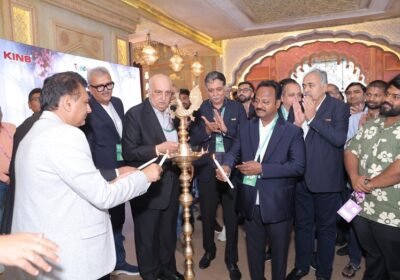
Revival and sustainability strategies by e-commerce initiatives to support Indian artisans and handicrafts
In India, the indigenous art and handicrafts sector employs around 20 million people, making it the second-largest sector after agriculture. We are the world’s second-largest textile exporter and 90 percent of the world’s handloom is made in India. But when the pandemic hit the world, it was one of the worst-hit sectors. The Handicraft industry and artwork industry were the first to get impacted. During this time, many people lost their jobs almost immediately and for a sector that has the majority of daily wage earners, the damage was colossal.
Now, as we approach the post-pandemic era, it’s time to reconsider handmade and traditional craft business models so that supply chains are more stable, growth is more inclusive, and local and traditional craftspeople, as well as handicraft artists, are better paid. Many craftsmen took advantage of the difficult times to reinvent themselves online, enlisting the help of their families’ younger generations to market their goods on social networking platforms. In the post-pandemic setting, modern technologies and social media platforms might be critical in assisting these traditional artisan businesses. Many craftsmen took advantage of these platforms to tap into previously untapped opportunities, such as robust internet connections and smartphone usage, as well as increased demand from a more conscious buyer. Here are some revival and sustainability strategies that can help to support Indian artisans and handicrafts:
First of all, to make the local art and handicrafts business relevant to the modern world, craftsmen require assistance, education, market understanding , and, in many cases, skill enhancement to create quality goods and channels to reach their target audience. More craft design engagement programs should be introduced by notable fashion and design institutions.
The Handicraft industry lacks the pioneers, who can take advantage of technology and the e-commerce boom because the younger generation is not too enthusiastic to carry further the legacy of generational art forms instead of better prospects. More than 80 percent of the local handicraft industry is led by MSMEs and they need to be aided and incentivized to formalize the employment of artisans and weavers. It will also help to ensure job security and offer social and medical cover for the artisans.
Many e-commerce platforms are presenting virtual handicrafts fairs, which feature art and craft forms from various craftsmen and weavers around the nation. Thousands of artisans with competence in many art forms, ranging from apparel, textiles, handicrafts, and handcrafted natural commodities classified with Geographical Indication, will be employed by several e-commerce platforms (GI). We need to link these dots for scale to make a positive impact on the lives and livelihood of artisans dispersed all over the country as well as contribute to the national economy. It would also contribute to the 2030 Sustainable Development Goals (SDGs).
For many years, these local artisans have worked in anonymity with no recognition from designers and brands. We need to shift the mindset from ‘artisans working for you to working with you’. This will help to build trust and send out a bigger message to the younger generation to carry on with the crafts. It should be the responsibility of the apex body to make policy inputs for creating an enabling ecosystem, beginning with the generation of credible and latest data.
Today, a large part of the world strongly values handmade and sustainable products, building a movement to revive hand-made against mass produced products. Our skilled artisans have always created finest works of superior quality not to be found anywhere else. India with it’s rich resources of age-old handloom and handicrafts with large number of skilled Artisans has a lot to contribute to this global movement as a pioneer.
Each and every artwork and handcrafted product has a unique story to tell. As these handicrafts move through the value chain, this story gets buried deeper and deeper in the layers of time till eventually, it is lost to the world. Most of these human stories are most often a reflection of the craftsman who poured himself into his handicraft. These stories sometimes tell the journey of the long hours that he laboured at his potting wheel, perfecting minute details by candlelight. Sometimes, these stories convey the many miles that he had to walk to transport his deftly crafted goods to the nearest market. The main problem many of today’s homegrown artisans face is the threat posed by colossal manufacturers who produce handicraft replicas en masse. These big brands and designers have the resources to keep abreast of customer trends, respond to them swiftly and deliver their products through the right distribution channels. We can also say that the urban perceptions towards handicrafts, for instance, are definitely worth examining. In this industry, the market trends and preferences often shift based on conscious marketing strategies employed by brands. Big multinational brands build brand consciousness through an array of promotional and advertising tools. Even today, many industries do not have the reach or the capital to employ these techniques, and get left behind in the mind of the customer. It is also a misconception that many people even consider handcrafted items too traditional, archaic even.
We as a consumer should also reconsider what we buy and how much we consume, as well as reward purpose-driven companies. Now, to bridge the gap between purpose and action, a new model of consumption will be required, one that reframes old buying methods, compliance requirements and mindsets. This is a chance for the government to invest in developing an enabling ecosystem for the country’s less fortunate craftsmen, while also benefiting the Indian economy. Local handicrafts and their artisans have been one of the lowest socio-economic classes in India today, and the community is shrinking rapidly. It all depends on the policy makers to strengthen the value chain, drive marketing programmes and empower artisans. Then only, the local handicrafts and artworks will earn the recognition that they deserve. With time, the Indian artisans and craftsmen in the country will flourish, and maybe someday soon, more artisans will have stories to tell.





